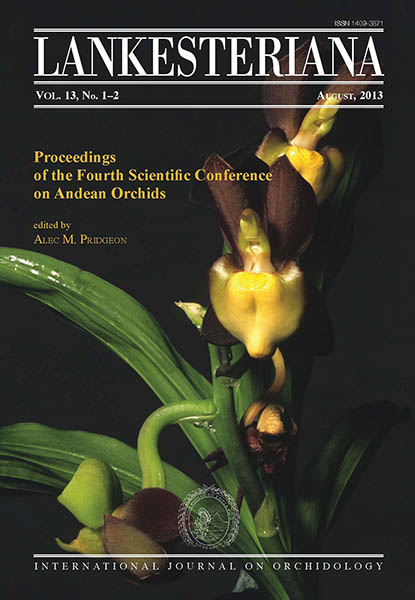Pollination of slipper orchids (cypripedioideae): a review
DOI:
https://doi.org/10.15517/lank.v0i0.11539Keywords:
cypripedium, mexipedium, phragmipedium, paphiopedilum, selenipediumAbstract
Cypripedioideae (five genera; ca. 176 species) are widespread in temperate and tropical Asia and America. About a quarter (42) of the species have been studied to determine their pollinators and/or breeding systems. All flowers are one-way traps pollinated by insects of particular types and size. Slipper orchids are selfcompatible and pollinated by deceit. Most Cypripedium species are pollinated by bees, whereas some smallerflowered species are pollinated by flies, and a few are pollinated by both. Most bee-pollinated Cypripedium species appear to be generalized food mimics. The fly-pollinated species have evolved diverse pollination systems that utilize a variety of flies as pollen vectors, including fruit flies, dung flies, and a fungal spore-eating hoverfly (Syrphidae). Most species of the tropical Asian Paphiopedilum and tropical American Phragmipedium are pollinated by hoverflies; flowers of many species in both genera have aphid-like spots that attract gravid female hoverflies that normally lay their eggs in aphid colonies. The more brightly colored Paphiopedilum micranthum and Phragmipedium besseae are pollinated by Hymenoptera. Autogamy is limited but occurs most frequently in Phragmipedium species. About two-thirds of the insect-pollinated slipper orchids (25/37) have evolved highly specialized flowers that are pollinated by a single pollinator or several pollinator species in the same genus. Species belonging to the same taxonomic section usually have the same pollination system. The deceit-pollination system of Cypripedioideae appears to have evolved early in diversification of Orchidaceae.Downloads
Download data is not yet available.
Downloads
How to Cite
Pemberton, R. W. (2013). Pollination of slipper orchids (cypripedioideae): a review. Lankesteriana: International Journal on Orchidology, 13(1-2). https://doi.org/10.15517/lank.v0i0.11539
Issue
Section
Articles
License
According to the Open Access policy promoted by the University of Costa Rica, all the papers published by Lankesteriana are licensed under the Creative Commons copyright and can be downloaded free of charge. The journal holds copyright and publishing rights under the CC BY-NC-ND 3.0 CR license.
Before the publication of the materials submitted by the author(s) in LANKESTERIANA, the author(s) hereby assign all rights in the article to the Lankester Botanical Garden.





